Knowing how to make a rope is one of the basic skills that everyone needs to survive in the wilderness during an economic breakdown, disasters, wars, or any catastrophic event. A rope can serve a range of purposes, including lifting, hunting, fastening, climbing, attaching, pulling, carrying, and building.
In the absence of regular ropes, you can make ropes or natural cordage out of fibers from the inner bark of some trees, such as willow, maple, and cedar; roots of lupine and leather; inner fibers of yucca and agave leaves; the whole stem of grasses such as tule and reed; and even stems of some wildflowers, such as cattails, nettles, and juncus.
Here’s a step-by-step guide for making ropes from plants.
Yucca
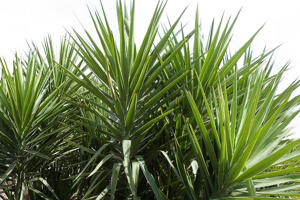 One of the easiest plants to make a rope with is the yucca plant. This plant is native to the Southwestern United States, and you can find them on the roadsides as well as in sun-kissed, open fields. The inner fibers of the yucca leaves are flexible and will yield a rope with a high tensile strength if processed properly.
One of the easiest plants to make a rope with is the yucca plant. This plant is native to the Southwestern United States, and you can find them on the roadsides as well as in sun-kissed, open fields. The inner fibers of the yucca leaves are flexible and will yield a rope with a high tensile strength if processed properly.
You can make a strong rope from a yucca plant with only a knife and some rocks if you don’t have tools. But if you have access to tools, you can make use of a piece of cloth and a hammer as well. You will also need a flat surface.
Related: 8 Items You Need To Bring if You Need To Leave In 10 Minutes
Step 1
Gather some long, straight, green yucca leaves. Arrange them over a flat surface. Use a piece of cloth to soften the impact of pounding on the leaves.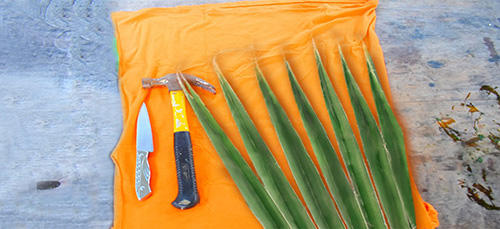
Step 2
To expose the inner fiber of the yucca leaves, the outer layer has to be removed first. Pound the leaves back to back with a hammer. In the absence of a hammer, you can use a rock or a piece of wood.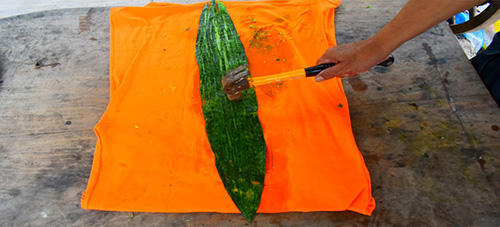
Step 3
Using the back of your knife, scrape the leaves off until the fibers are exposed. A shell, a spoon, or a flat rock will also do the trick. Be careful not to cut the fibers with your scraping tool.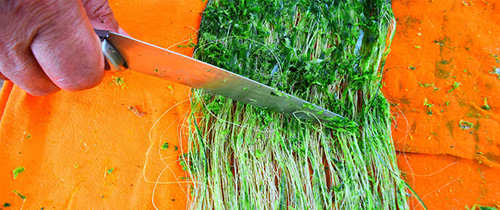
Step 4
Once you have enough fibers, you can start making the rope. Separate enough fibers approximately half the size of the diameter of the rope you’d like to make. Start twisting the strand by rolling each end between your forefinger and thumb in opposite directions. It is best to start braiding the rope while the fibers are still wet.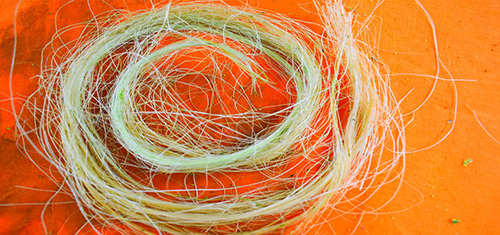
Step 5
When you come an inch or two to the end of them, add another set of fibers, and just twist them right in. Make sure the new set overlaps and intertwines with the original strand so that they are anchored into place. Continue twisting until the new strand is wrapped together with the old section.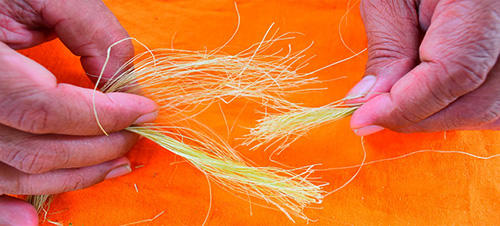
Step 6
Find the center of the strand, bend it to form a loop or an eye, and hook it to a strong twig or branch of a tree.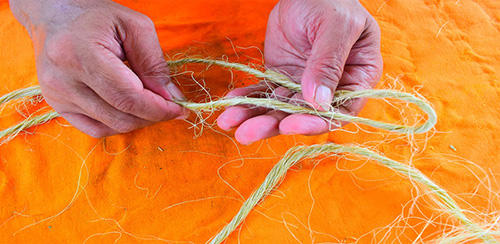
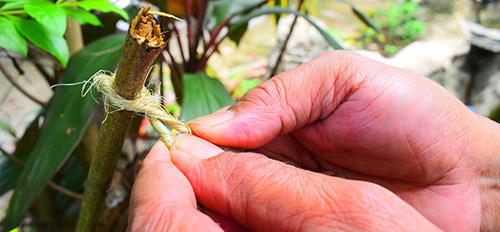
Step 7
Start braiding the rope to form a helix pattern, pulling hard while continually twisting the strands. Make sure that the two sections are twisted an equal number of turns as they’re braided so that they wind around one another tightly. An imbalance in the twisting will cause one strand to stay straight and the more twisted side to coil around it like a spring. This will create a weak point in the rope.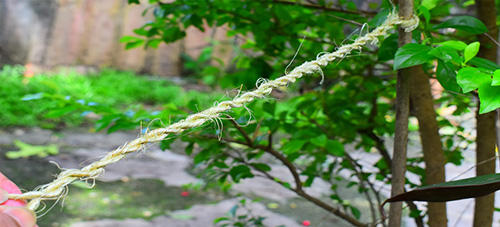
Step 8
Add more fibers if you wish to lengthen your rope, following the instructions in Step 5.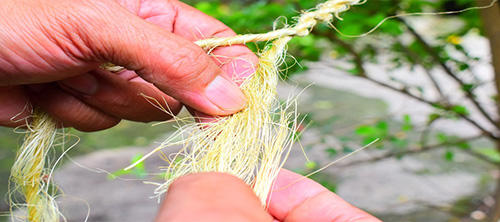 Step 9
Step 9
Test the strength of your rope. When you are satisfied, tie a stopper knot at the end of the rope to prevent it from unraveling. Yucca fibers are tough, and the rope that you create out of it will be strong and resilient. Some even say that a rope made out of yucca fibers is as strong as hemp.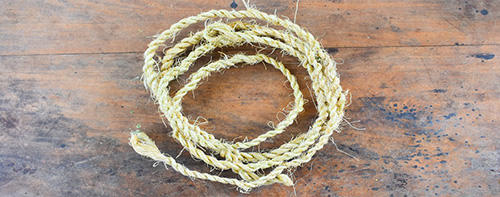
Giant Reed Grass
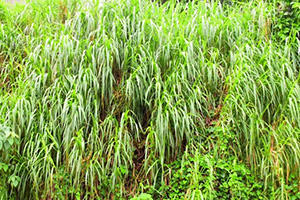 Reed grass grows along the banks of streams and lakeshores as well as in marshes. It is abundant and widely distributed throughout North America.
Reed grass grows along the banks of streams and lakeshores as well as in marshes. It is abundant and widely distributed throughout North America.
The leaves of the reed grass can be woven into mats and can be used to make ropes.
In fact, the earliest coils of ropes found in one of the caves of an ancient Egyptian harbor from nearly 2000 B.C. were believed to be made of reed.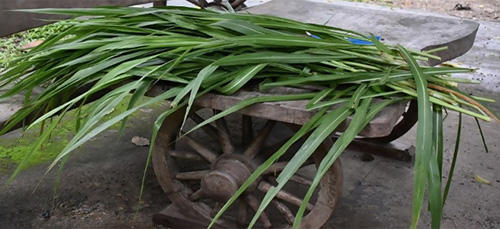 To make ropes out of reed, choose the thin and soft but strong variety, the kind that doesn’t snap when you bend it. Make sure to use gloves to protect your hands from its sharp edges.
To make ropes out of reed, choose the thin and soft but strong variety, the kind that doesn’t snap when you bend it. Make sure to use gloves to protect your hands from its sharp edges.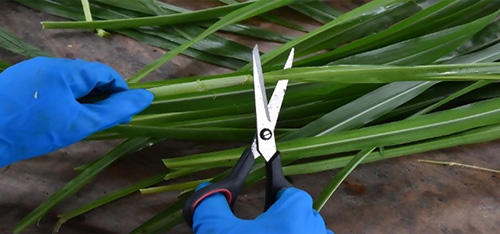 Remove the leaves and mush them up a bit with a hammer or a piece of wood to soften them.
Remove the leaves and mush them up a bit with a hammer or a piece of wood to soften them.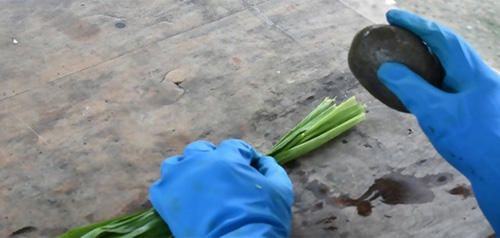 Follow the same procedure as the yucca above in making a rope out of it.
Follow the same procedure as the yucca above in making a rope out of it. 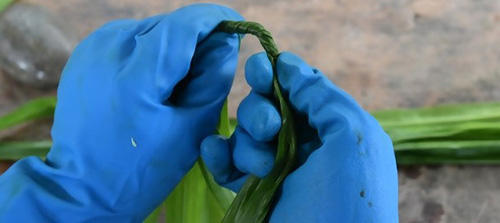
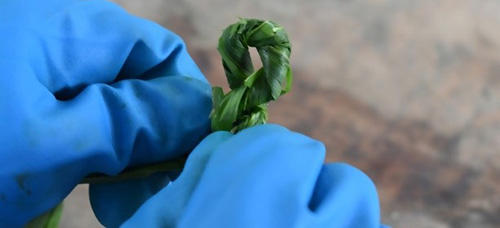 You can also use other grasses aside from reed as long as they are pliant and strong. Ropes made out of grass can last for years provided you keep them from getting wet.
You can also use other grasses aside from reed as long as they are pliant and strong. Ropes made out of grass can last for years provided you keep them from getting wet.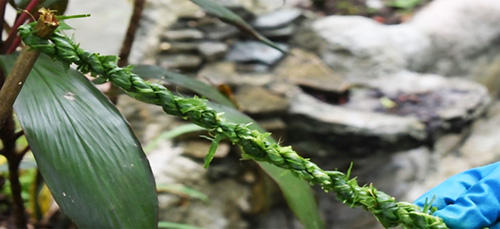
Related: Emergency Shelters When You Are On The Move
Stinging Nettles, Dogbane, and Milkweed
The fibers from stinging nettles also make good ropes, but be careful of its small spines. Better still, use gloves when you harvest nettle stalks.
Unlike the yucca and reed, you can’t make a rope out of the nettles right away. You need to expose them to the sun for a day or two before you open them up by pressing a rock against them. You can then start peeling off the green fiber from the inside of the stalk. The same can be done with milkweed and dogbane.
So there you are! Making ropes out of common plants is a skill that cannot be taken for granted. It may come in handy one day, and it may even save lives.
You may also like:
 DIY Wilderness Soap And Shampoo From This Plant
DIY Wilderness Soap And Shampoo From This Plant
If You Are Too Weak to Prep then You Need to Watch This (Video)

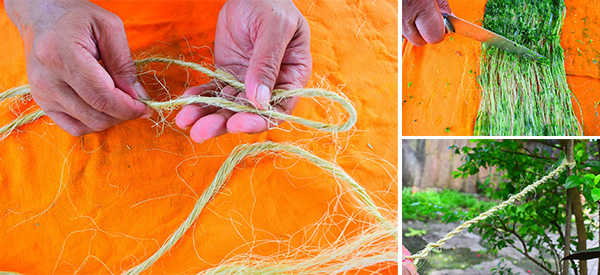










NICE! Always wondered about these things. This is what they should teach in school. Bring back Shop Classes. Thank You for sharing.
i Like, OLE!
Did you ever use dandilion, (sp) the stems of them, I have heard that you can put them together also, girl scout
tried it when my girls were little, I don’t remember how
to do them anymore.
I taught my daughter how to do those when she was 5, still makes them at 12 years old.
What plants or trees would you suggest using in SW Florida, to make rope?
1. Palm fronds, preferably large ones from palm trees, although even palmetto can work.
2. Cattail.
Use the inter bark of a Linden tree, also known as basswood.
1. Palm fronds. Even palmetto fronds will work.
2. Cattail.
3. Any kind of reed (see above in the article).
Excellent! Doing yucca I like to ret it, soaking it in water for a few days. Messy, but the fibers separate easier. But, when in need of string in the garden, usually just take a leaf off the plant and pull it into long fibers, then use. It can be used in single strand to weave cloth, and it’s durable.
We used to use stinging nettle stalks and the fibers are cloth quality, like linen plant. Again, ret the stalks. Simmer the leaves till wilted, drain, and add butter and pepper. The chemical that causes the sting evaporates. this is supposed to be a very high powered food.
When making thing for pow wows, horn spoons and so on, a piece of grass twine, from green leaves, was used to attach the name tag and date it was made. That was a hit, always. Grass twine is always fuzzy and rough, but very strong. niio
New Zealand flax and those big spiky agaves produce fibre too and while you can rett it, it isn’t strictly necessary. I like yucca for that reason.
Learn something every day if one is not careful. I see that Red and Ginny in WA both used “ret” referring to the leaves. I thought in both cases it was a typo (of which too many appear in my posts) but I was curious about why they both made the same typo inasmuch as w and r are not frequent letter transpositions on the querty keyboard.
So I looked up “ret” expecting no return. Surprise! Surprise! Surprise!
“ret | ret | (also British rate)
verb (rets, retting, retted) [with object]
soak (flax or hemp) in water to soften it and separate the fibers.
“ORIGIN late Middle English: related to Dutch reten, also to rot.”
Thanks to both of you, Red and Ginny. I have added a new word that just might be quite important to my vocabulary.
Might also be of assistance to the one or two other readers of this list who also thought that “ret” was a typo for wet. Although it is possible I am the only one in the world who did not know that word.
I too thought is was a typo for wet. Thank You for clearing this up. i Like, OLE!
It’s just something I picked up years ago when I was delving into the mysteries of linen production from flax. In reality that seems to be the only place I’ve heard it used consistently so don’t feel bad about it. It is an interesting word though and auto correct doesn’t like it ?
It’s just something I picked up years ago when I was delving into the mysteries of linen production from flax. In reality that seems to be the only place I’ve heard it used consistently so don’t feel bad about it. It is an interesting word though and auto correct doesn’t like it
BTW it is a very smelly process. As the green tissue around the fibre bundles rot it can be very on the nose – and polluting to streams if you use running water.
What’s running water? 🙂 I live in south sentral Az and it’s always a pleasant surprise when one or two days a year we actually have water sinking into the sand in the rivers. But: Any water from the retting process is a mild fertilizer and goes in the garden. Green plants are high in nitrogen. Yes, it smells BAD 🙂 niio
No, not needed. When I need strong in the garden, I take fibers from the edges of the yucca leaves. But, for something big, retting makes it a lot nicer to work with. It also takes away most of the ‘soap’ from the leaves so the hands don’t get sticky working with the fiber. Have you used yucca for cloth, yet? It’s still used in Mexico, tho usually combined with cotton or wool. Indians say it’s good, if coarse, and should last about ten years. We have native flax seed to plant in the fall. niio
Mexican but Cuban at Heart ?
Ño… not niio even though phonetically is the same.
yes a tilde on top of the letter N
Born in Mexico, Made in Texas…
maternal grandmother – Apache
maternal grandfather – from Tehran (middle eastern blood)
paternal grandmother – France (oui oui)
paternal granfather – Mongolian / Zapoteca Indian
that explains why I had a short fuse LOL growing up and why I love diversity. OLE!
FVP: All American! My Maria’s grandkid (a preschooler) punched her mother because she didn’t jump up and serve them. Maria just sighed and said, “At your age, and still bad-tempered? Oh, no.” She said the kid started to cry and hugged her mother. No more bad temper, from her, at least. “You come from respectable people.” Niio
Most definitely useful and thank you for it!
I do have a serious question an does seem it would be a tad bit faster.
Monofilament fishing line that has been stored away from sunlight. One use for it is limited only by their imagination From snares to nets to fish or catch crabs or shrimp with or make fish traps to tangle foot to hammocks and more.
Finally my question…Spools of Mono line are relatively inexpensive…..I dunno how many spools or what # test line …should be relatively easily to make a rope out of ..
For example several spools of #50 pound test line or even #12 pound Test Line spun together into a rope.
There is a stretch factor to consider but I have never seen anyone suggest making a rope from it…..There are different was to make the rope from just twisting to braiding or whatever.Just like using spools of twine or kite string,,,
Can anyone answer why not to use Mono in such manner? OR using Mono to make rope is a Bad Idea Or Maybe a Good Idea?
I would think since rolls are not very big and lightweight and it is Multipurpose to keep one or more rolls in your Survival Gear Box.
Thanks.
Twine and natural materials can be combined into thicker rope in part because the strands stick to each other. (The twist is absolutely critical as well, of course.) Slick materials like fishing line and nylon string do not hold together as well. It can be done, but you must fuse both ends, and fuse again if you every cut the rope in two. And still not as stable as if you are using rougher materials.